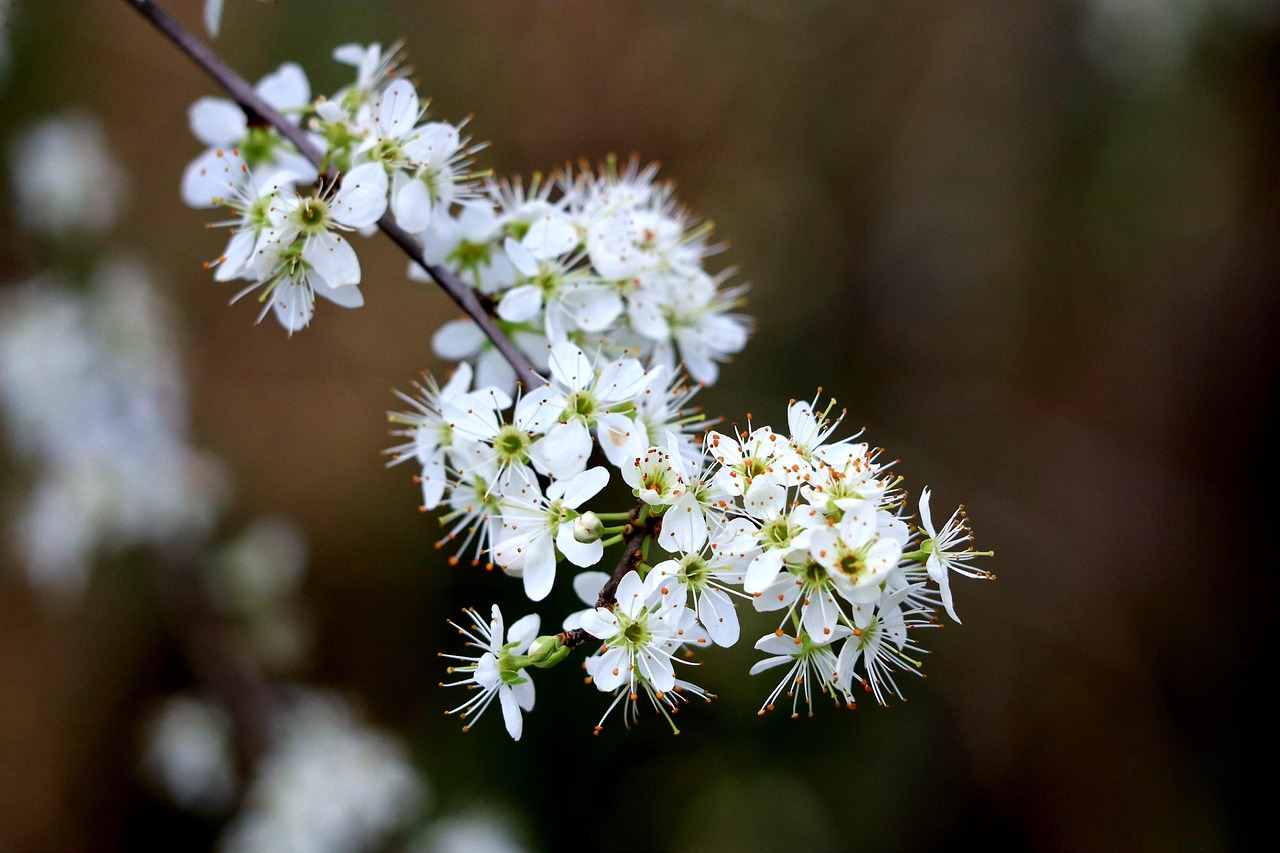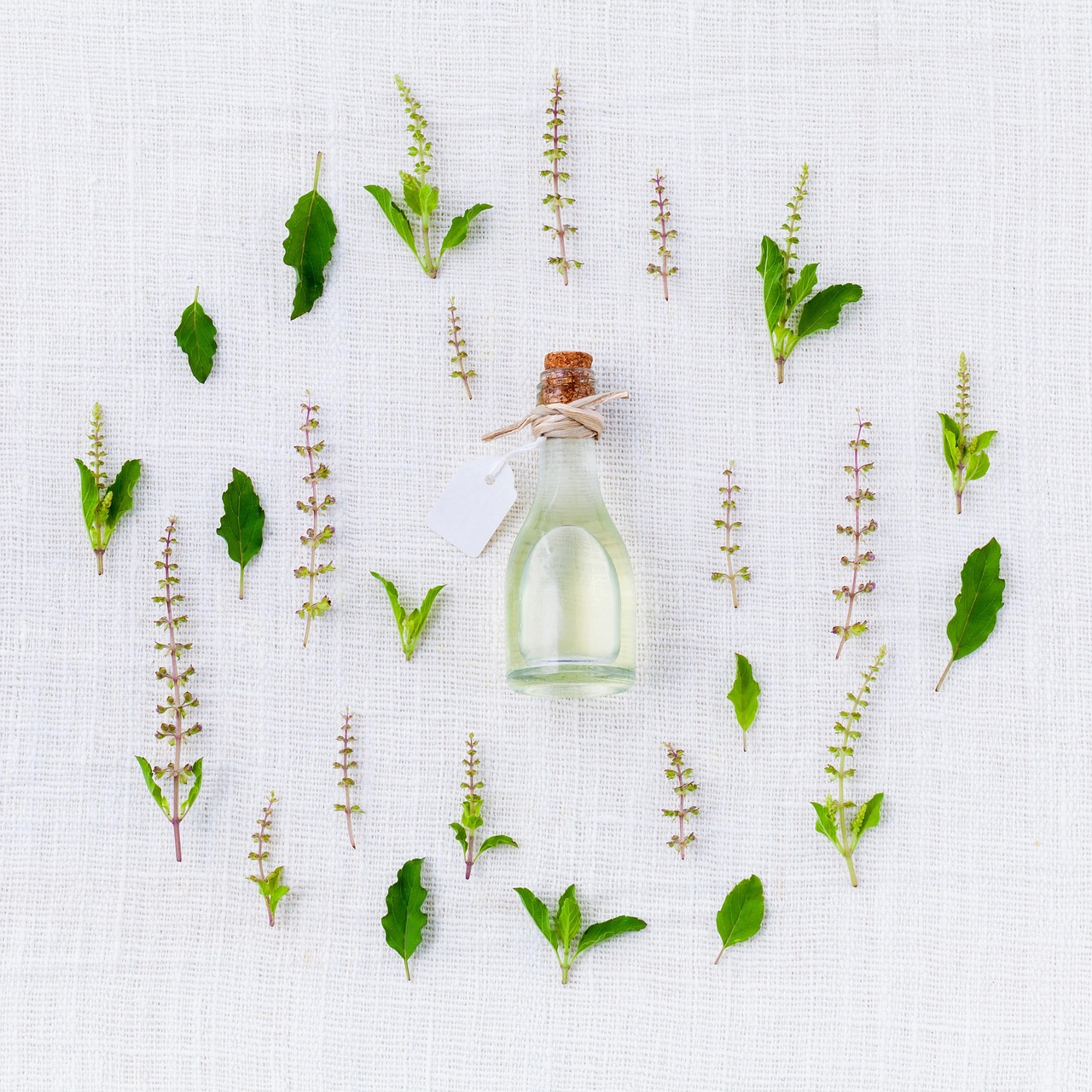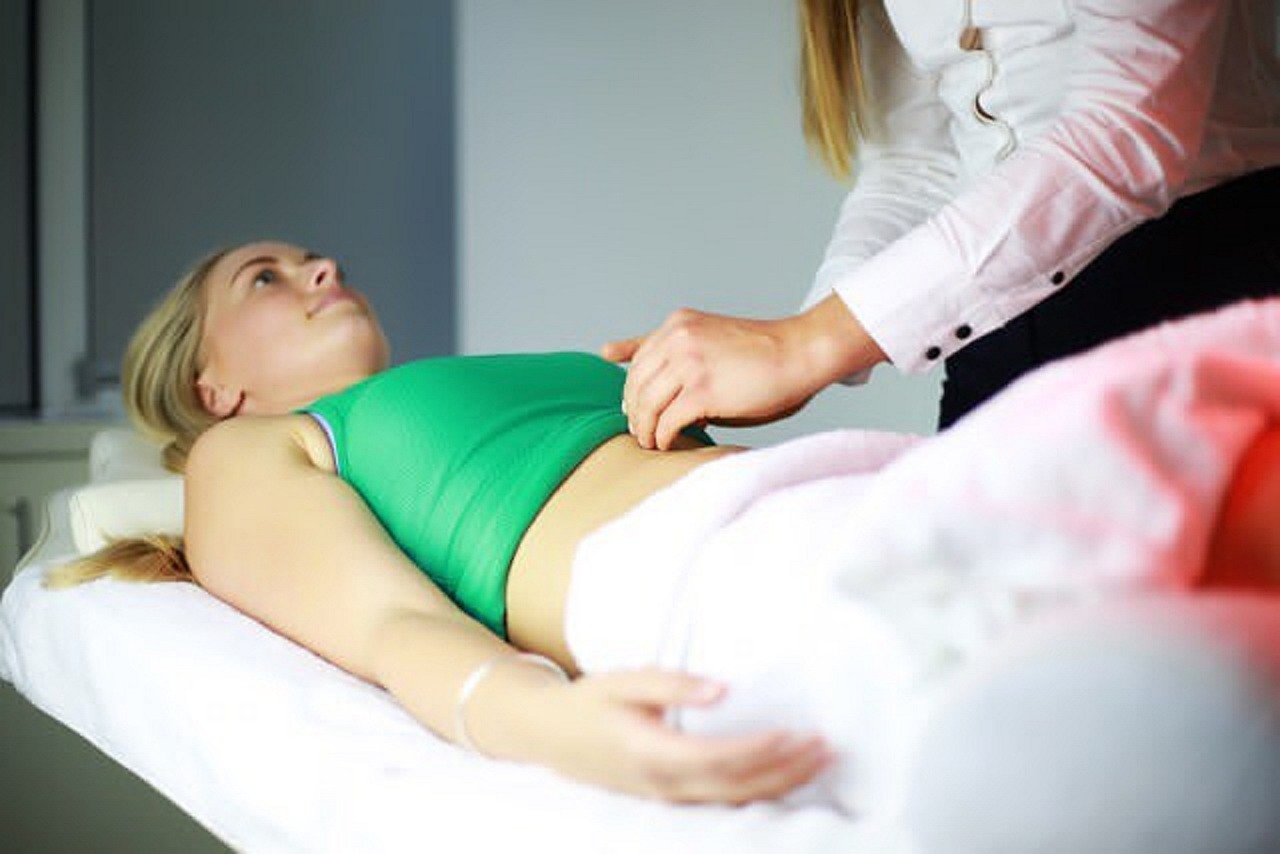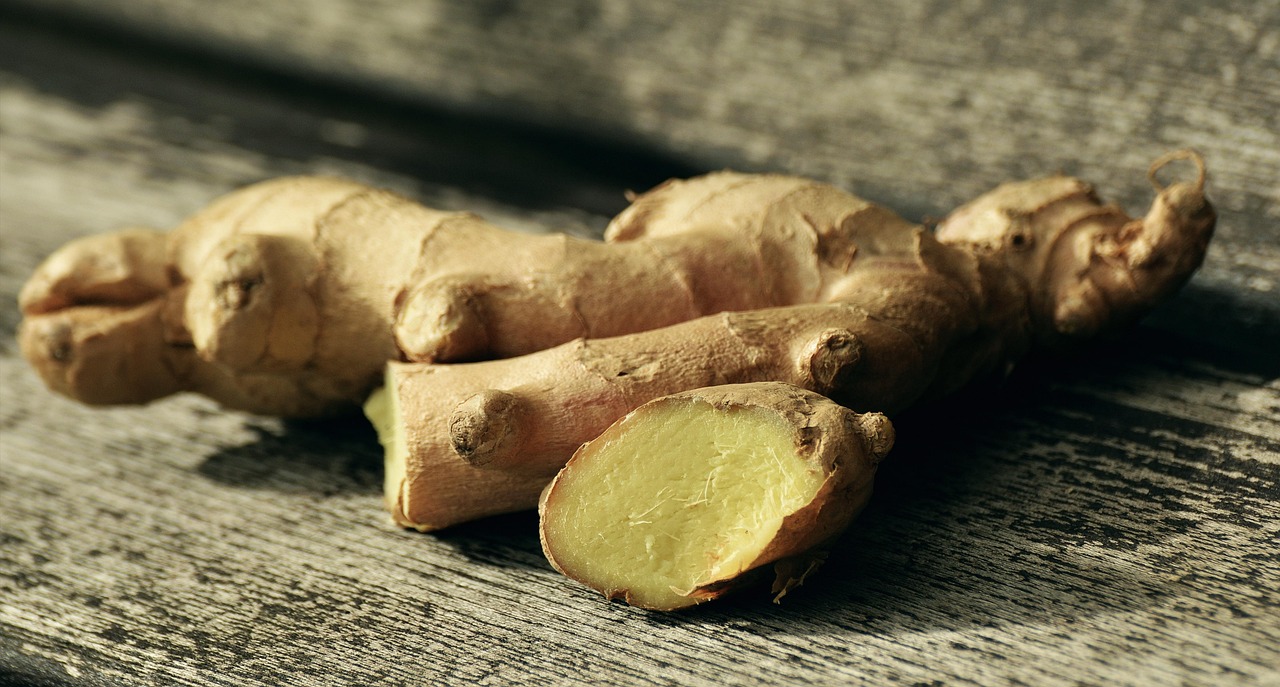Medicinal plants in focus: The truth about natural medicine and its myths!
Discover the world of naturopathy: from medicinal plants and controversial therapies to patient reports and scientific studies.

Medicinal plants in focus: The truth about natural medicine and its myths!
In the world of naturopathy, there is hardly a topic that generates as much enthusiasm and at the same time as heated controversy as homeopathy. Since its creation in the late 18th century by Samuel Hahnemann, it has established itself as one of the most popular alternative healing methods, finding millions of followers worldwide. Their basic idea of treating diseases with highly diluted substances that cause similar symptoms in higher doses is as fascinating as it is polarizing. While proponents report profound healing successes, critics see homeopathy as merely a placebo effect or even misleading. This article delves into the multifaceted world of homeopathy, examining its principles, scientific debate and its role in the modern healthcare landscape to paint a nuanced picture of this controversial method.
Introduction to naturopathy

Let's imagine that health is a garden where every plant, every stone and every drop of water plays a role in creating harmony. Naturopathy is based on exactly this image - an approach that not only combats individual complaints, but also understands people as a whole. It combines methods based on natural remedies and processes to promote well-being and activate the body's self-healing powers. The focus is on the unity of body, mind and soul, a concept that is already rooted in the writings of Hippocrates or the teachings of Hildegard von Bingen. Anyone who would like to find out more about this holistic view will find well-founded insights on this platform, which explains the basics of naturopathy in an understandable way.
At its core, this approach aims to not only alleviate symptoms, but also to identify and treat the underlying causes of illnesses. Gentle methods such as the use of medicinal herbs in phytotherapy or the stimulation of energy points through acupuncture are intended to support the body without burdening it with aggressive interventions. Historical figures such as Sebastian Kneipp, who became known for his combination of water treatments, exercise and nutrition, shaped these principles. Rudolf Steiner also paved a path with anthroposophical medicine that combines traditional approaches with spiritual elements. The range of procedures is wide and extends from Ayurveda, an Indian healing art based on individual body types, to Traditional Chinese Medicine (TCM), which focuses on the flow of life energy Qi.
One advantage that draws many people to these methods is the low likelihood of side effects compared to some conventional medical treatments. Therapies are often tailored to the individual, whether through therapeutic fasting for detoxification or yoga, which reduces stress hormones such as cortisol and strengthens the immune system. Diet also plays a central role: whole foods with a high proportion of plant-based foods, anti-inflammatory spices such as turmeric or omega-3-rich oils are recommended to support the body from within. Such approaches aim for sustainable healing by promoting the organism in its natural balance.
However, there are aspects that need to be taken into account. In the case of serious or acute illnesses, naturopathic methods are often not sufficient and require conventional medical intervention. Interactions with conventional medications can also occur, which is why consultation with a doctor is essential. While conventional medicine focuses on scientifically based treatments for acute complaints, naturopathy places more emphasis on prevention and the support of chronic diseases. These different focuses make it clear that the two approaches are not always in contradiction, but can in many cases complement each other.
In addition to the aforementioned acupuncture, the diverse methods used in this area also include lesser-known procedures such as cold chamber therapy, which stimulates blood flow in cases of joint inflammation, or treatment with medicinal leeches, whose saliva contains anti-inflammatory enzymes. Equally fascinating is foot reflexology massage, which stimulates organs via nerve pathways in the feet, or Bach flower therapy, which is intended to release emotional blockages using flower essences. Medicinal plants such as marigold, lavender or St. John's wort, which have been used for centuries, form the heart of herbal medicine and can be found in recipes such as Ayurvedic golden milk to strengthen the immune system.
A look at the areas of application shows how broad the possibilities are: from rheumatism and osteoarthritis to burnout and skin diseases, naturopathic approaches offer support. More and more health insurance companies are recognizing the value of such therapies and, for example, reimburse acupuncture for knee problems, as stated in an informative article this page is described. This development suggests that naturopathy is increasingly being perceived as a serious complement to conventional medicine.
The diversity of approaches - from Qigong, which promotes the flow of energy, to hydrotherapy with targeted water applications - reflects how deeply rooted the idea of looking at the human being as a whole is. Each method contributes in its own way to restoring balance and awakening one's own healing powers, a principle that has endured for thousands of years.
Popularity of medicinal plants

Just a walk through a herb garden can feel like a journey into the world of ancient healing wisdom, where every scent and every leaf structure whispers stories of health and well-being. For thousands of years, cultures around the world have relied on the power of plants to relieve discomfort and restore balance in the body. From the Egyptian papyri to Ayurvedic writings to the texts of traditional Chinese medicine - references to the healing effects of flowers, roots and bark can be found everywhere. This ancient practice, now known as phytotherapy, is a central pillar of naturopathy and combines traditional knowledge with modern research.
A look at the variety of plant parts used shows how specifically nature is used. While valerian roots have a calming effect as a so-called root drug, sage leaves are used for inflammation in the mouth. Chamomile flowers, often referred to as a flower drug, relieve stomach problems, and oak bark helps with diarrhea thanks to its tannins. Seeds such as psyllium support digestion, while fennel fruits counteract flatulence. Even peels, such as those from bitter oranges, are used to stimulate the appetite. Each part of a plant contains specific active ingredients that are not evenly distributed but must be specifically extracted in order to develop their full power.
Different groups of active ingredients shape the respective effect. Bitter substances, such as those found in gentian or wormwood, promote digestion and stimulate the appetite. Essential oils from peppermint or eucalyptus have an invigorating or decongestant effect due to their scent. Flavonoids, abundant in marigolds, act as antioxidants to protect blood vessels, while mucilage from marshmallow roots forms a protective film on mucous membranes. Tannins, such as those found in oak bark, contract tissues to reduce inflammation, and silica from horsetail strengthens skin, hair and nails. This variety makes it clear why the right selection and preparation is crucial.
The type of extraction plays an equally important role. An infusion in which the substances steep in hot water for 5 to 15 minutes is suitable for delicate plant parts such as leaves or flowers. Solid parts such as roots or bark require a decoction, in which they are simmered for 15 to 30 minutes to release their active ingredients. For plants containing mucilage, a cold extract is preferred, in which the plant parts are soaked at room temperature. Such methods are described in detail in a comprehensive guide this page, show how precise the application must be to achieve the desired effect.
Some plants have become particularly well-known due to their versatility and effectiveness. Chamomile not only calms the stomach, but also helps with sleep problems and has an anti-inflammatory effect. Lavender, often used in aromatherapy, relaxes and relieves anxiety. Peppermint refreshes and can relieve headaches and indigestion. Echinacea is often used to boost the immune system, especially during cold season, while turmeric's anti-inflammatory and antioxidant properties have attracted attention for arthritis or even cancer treatment. These examples illustrate how wide the range of applications is.
Modern science is increasingly substantiating what traditional healers have known for centuries. Clinical studies like them this platform summarized, confirm the effectiveness of plants such as St. John's wort for mild depression or Ginkgo Biloba to promote blood circulation. Nevertheless, researchers face challenges, such as standardizing extracts, as the concentration of active ingredients varies depending on cultivation, harvest time and processing. This complexity requires care in dosing and an awareness of possible drug interactions.
The integration of such medicinal herbs into everyday life can be done in a variety of ways. Teas, tinctures, ointments or essential oils offer different forms of application, as do culinary uses in the kitchen. If you want to maintain control over quality and purity, you can grow many plants in your own garden, although location, soil conditions and the right time to harvest - often during flowering - are crucial. Storage also requires attention: dark, airtight containers protect against light and moisture, and freshly prepared infusions should be used within a day to avoid losing their effect.
Engaging with these natural helpers not only promotes health, but also a deeper connection to nature. Whether it's the calming scent of lavender or the warming effect of a turmeric drink - each plant contributes in its own way to increasing well-being and bringing traditional knowledge into the present.
Controversial therapies

When it comes to healing, even the gentlest approaches can spark heated debates because not every method of naturopathy is fully accepted. Some therapies straddle the line between hope and skepticism, polarizing experts and patients alike and raising questions about effectiveness, ethics and safety. Controversial procedures come to the fore, particularly in the treatment of serious illnesses such as cancer or psychological illnesses, which both attract desperate sufferers and provoke sharp criticism from the scientific community. A closer look at these controversial approaches reveals why they attract so much attention – and suspicion.
An example that always causes debate is homeopathy, which has divided opinions since its creation by Samuel Hahnemann in the 18th century. Their basic idea of treating diseases with highly diluted substances that would cause similar symptoms in larger quantities is met with rejection by many conventional doctors. Critics argue that the dilutions are often so extreme that hardly any active ingredient molecules remain detectable, which reduces the effect to a placebo effect. Nevertheless, numerous users swear by the method, report relief from chronic complaints and appreciate the gentle approach. This gap between subjective success and lack of scientific evidence makes homeopathy a long-running issue in the debate about alternative healing methods.
Another therapy that has recently caused a stir involves the use of dendritic cells in cancer. Providers such as the company Immucura advertise a treatment that is presented as painless and almost free of side effects, at a cost of around 40,000 euros per patient. Desperate sufferers often collect donations to provide this hope, but the effectiveness remains highly controversial. Experts and the European Medicines Agency (EMA) warn against unregulated therapies that could pose risks, especially since there is no approval for such treatments in Germany. A detailed report on this page highlights the questionable practices and the lack of solid studies to support its benefits. The discussion shows how great the danger is that vulnerable patients will fall for unsecured promises in their time of need.
In another field, the treatment of depression, approaches that have long been taboo are also coming into the spotlight. Electroconvulsive therapy (ECT), now performed under anesthesia and with muscle relaxants to prevent injury, has distanced itself from its brutal past. Their effectiveness in severe, treatment-resistant depression is recognized, but the exact mechanism of action remains unclear, and side effects such as memory impairment deter many. Researchers are working on alternatives such as magnetic convulsive therapy (MCT), which is supposed to act more gently using magnetic fields, and on the use of ketamine, an intoxicant whose antidepressant effects are being investigated. A detailed insight into these developments can be found at this platform, which highlights the advances and risks of such methods. Despite new approaches, the negative reputation, often characterized by dramatic film depictions, remains an obstacle to wider acceptance.
The use of ketamine in the treatment of depression is equally controversial because it is not yet officially approved and poses potential risks of addiction. Studies show that it works through the glutamate system and promotes new connections between nerve cells, which can provide quick relief. But the cost of around 200 euros per infusion and the unclear long-term effects make it a double-edged sword. New forms such as a nasal spray are being tested to make it easier to use, but the balance between benefit and risk remains a key point of contention. Such therapies illustrate how urgently innovative solutions to mental illnesses are sought, but also how careful one must be when implementing them.
Another area that causes ambiguity in naturopathy is the use of Bach flower therapy. Flower essences are intended to release emotional blockages and promote mental balance. Proponents see it as gentle support for stress or anxiety, while critics dismiss the effect as purely psychological or suggestive because it does not contain any measurable active ingredients. This discrepancy between personal experience and scientific evidence reflects a fundamental dilemma of many alternative approaches, in which belief in method often plays a greater role than empirical evidence.
Dealing with these therapies shows how complex the tension between innovation and responsibility is. As patients look for alternatives when conventional options fail, the question remains how far one can go to offer hope without making false promises. The debate about effectiveness and ethics continues to accompany these methods and challenges both users and researchers to find responsible use.
The role of homeopathy

A tiny drop that is supposed to restore balance in the body - this idea almost sounds like alchemy, and yet it is at the heart of one of the best-known methods of natural medicine. In the late 18th century, Samuel Hahnemann developed a concept based on the principle “like should be cured by like,” derived from the Greek term “homoion pathos,” which means “similar suffering.” His idea was revolutionary: a substance that causes certain symptoms in a healthy person could, in diluted form, alleviate these same symptoms in a sick person. This basis still shapes the application and discussion about a form of therapy that mobilizes supporters and opponents alike worldwide.
Hahnemann tested his hypothesis in self-experiments, for example with cinchona, which gave him symptoms similar to those of malaria. Such drug trials on healthy volunteers, in which physical and psychological changes are carefully documented, form the basis for so-called drug theory. A homeopath compares a patient's complaints with these records to find the appropriate remedy, taking into account not just the main problem but all relevant symptoms. Classic representatives of this method rely on individual remedies instead of complex preparations, as this is the only way to ensure the specific effect of a substance. The website of the Association of Classical Homeopaths in Germany provides a detailed overview of these principles this page, which explains the basics in an understandable way.
Another central element is so-called potentization, in which starting substances are gradually diluted and shaken. Hahnemann believed that this process, which is regulated in the Homeopathic Pharmacopoeia (HAB), increases the effect, even when the dilution is so high that hardly any molecules of the original substance can be detected. According to this theory, some substances only develop their healing power when potentiated. This practice, often used in the form of globules or drops, is fascinating because of its gentleness, but this is exactly where the harshest criticism comes from.
Many scientists are skeptical about the concept because it seems to contradict basic knowledge in chemistry and physics. Jürgen diaperer, head of the Institute for Quality and Efficiency in Health Care (IQWiG), compares the search for the effect of such substances to the hunt for a fantasy creature behind the moon. In a detailed article on this platform He argues that observed improvements are often not related to the means themselves, but are due to a placebo effect or the so-called context effect. The intensive care and detailed discussions that homeopaths have with their patients could also contribute to relief, regardless of the substance.
Despite such objections, the method remains deeply rooted among the population. Many people use the small beads for colds, sleep disorders or chronic complaints and report positive experiences. Some health insurance companies even support these treatments financially, which critics like diaperer see as a means of customer loyalty since the popularity remains unbroken. Its use may seem unproblematic for harmless ailments, but for serious illnesses such as cancer, rejecting proven therapies in favor of alternative approaches is viewed as dangerous. The Cancer Information Service (KID) registers inquiries about this method, but most of those affected use it as a supplement, not as a replacement.
The tension between personal conviction and scientific evidence has a lasting impact on the discussion. While users appreciate the individual consideration and the gentle approach, skeptics demand solid evidence that goes beyond subjective reports. Studies demonstrating an effect beyond the placebo effect are rare, and the extreme dilutions present a logical puzzle to many. Yet for millions, the practice remains an integral part of their health routine, often driven by a deep faith in the idea that like can cure like.
This discrepancy between belief and evidence raises questions that go beyond mere application. How do you measure the value of a therapy when the effect is noticeable for the individual but not scientifically tangible? And what role does the context in which healing is experienced play? The debate on these issues remains lively and challenges both supporters and critics to continually question their perspectives.
Acupuncture in focus

Imagine your body was a network of invisible pathways through which energy flows, and a small prick could release blockages to relieve pain. This idea, deeply rooted in Traditional Chinese Medicine (TCM), forms the basis of a method that has been practiced for thousands of years. Using fine needles placed into the skin at strategic points, it aims to restore the balance of yin and yang and the flow of life energy - called Qi - through meridians. There are over 361 such points known in the body, and their stimulation is said to not only relieve pain but also promote general well-being.
The technology itself is precise and minimalistic. A trained practitioner inserts between 5 and 20 ultra-thin needles at various locations and depths, often with minimal discomfort to the patient. A slight tingling or dull feeling may occur when the needle hits the right spot. These then remain in the body for 10 to 15 minutes, sometimes up to an hour, while the patient sits or lies relaxed. In some cases, the needles are gently manipulated, treated with heat, or stimulated with electrical pulses to increase the effect. A typical treatment series includes 6 to 8 sessions, often spread over several months for chronic complaints.
The areas of application are diverse and range from relieving chronic back pain to treating migraines to helping with nausea after chemotherapy or operations. Other areas of use include neck pain, osteoarthritis, menstrual cramps, fibromyalgia, toothache and childbirth pain as well as respiratory diseases such as allergic rhinitis. This breadth makes the method attractive to many who are looking for alternatives to conventional pain therapies. The Mayo Clinic website provides a well-founded overview of the application and procedure this page, which goes into detail about procedures and possible uses.
From a TCM perspective, health is understood as a harmonious balance of Qi flowing through meridians. Disruption of this flow can cause illness or pain, and the placement of the needles is intended to clear these blockages. Western doctors, on the other hand, often interpret the effect differently: They see the acupuncture points as places where nerves, muscles and connective tissue are stimulated, which could promote the release of the body's own painkillers such as endorphins. Studies, such as a meta-analysis from 2018, suggest that the pain-relieving effect goes beyond a pure placebo effect by influencing pain processing in the central nervous system and increasing blood flow.
Nevertheless, the question of the exact mechanism of action remains open and causes divided opinions. Many patients report noticeable relief, feeling relaxed or energized after a session, especially with chronic complaints such as migraines or back pain. Proponents also value the low risk of side effects - usually only mild pain, bruising or bleeding at the injection sites - as well as the possibility of combining the method with other treatments. When performed by certified practitioners using sterile, disposable needles, it is considered safe, with the FDA regulating the needles as medical devices that must be non-toxic and labeled for single use.
On the other hand, there are skeptics who question the effect because the results are difficult to measure and cannot always be consistently reproduced in studies. Some doctors see this as merely a suggestive effect or a placebo effect, reinforced by the calming atmosphere and personal attention during the treatment. It is also pointed out that caution is advised for certain people - for example with pacemakers or during pregnancy. In rare cases, complications such as infections or even injuries from broken needles can occur, highlighting the importance of a qualified provider.
The discussion about effectiveness reflects a broader tension between traditional knowledge and modern science. While some point to thousands of years of experience and view the method as a valuable addition to conventional medicine, others call for more rigorous evidence and a clearer explanation of the underlying mechanisms. These different perspectives invite us to consider the method not only as a remedy, but also as a cultural heritage that continues to be researched and questioned.
Nutrition as a remedy

What we put on our plate can do more than just satisfy hunger - it could be the key to a healthier life. In naturopathy, nutrition is considered a fundamental pillar that not only nourishes the body, but also supports its self-healing powers. Hippocrates is said to have said: “Your food is your medicine,” and this idea still shapes the holistic approach today, in which food is viewed as medicine. But in a world full of ready meals, snacks and fast food, it is often a challenge to make conscious decisions. At the same time, certain nutritional trends and diets cause heated debates because they hold both promises and risks.
The basic idea in naturopathy is to provide the body with natural, unprocessed foods that are rich in nutrients. The focus is on a plant-based diet, supplemented by moderate amounts of animal products. In its 10 rules for a healthy diet, the German Nutrition Society (DGE) recommends eating five portions of fruit and vegetables every day, preferring whole grain products and reducing sugar and salt. Water as the main drink, gentle preparation methods and mindful eating are other cornerstones that are also valued in naturopathy. The website of the Federal Ministry of Health offers helpful guidance this page, which provides practical tips and recommendations for a balanced diet.
In this context, a menu that focuses on fresh ingredients is often advocated: a breakfast of whole-grain muesli with fruit, snacks such as vegetables or yoghurt and a warm meal with whole-grain pasta, potatoes or rice, combined with plenty of vegetables. Anti-inflammatory foods such as berries, nuts, broccoli or spices such as ginger are particularly popular in naturopathy because they are intended to help the body fight chronic inflammation. Omega-3 fatty acids from vegetable oils or cold-water fish are also highlighted for their positive effects on the heart and blood vessels.
But while these principles are largely undisputed, special diets that are often recommended in naturopathy are a source of debate. Therapeutic fasting, for example, in which solid food is avoided for a certain period of time, is intended to detoxify the body and change the metabolism. Proponents report increased energy and a reduction in inflammatory substances, but critics warn of deficiency symptoms and the risk of a yo-yo effect, especially if it is carried out without medical supervision. Such fasting cures require careful preparation and aftercare so as not to overtax the body.
Another controversial direction is the raw food diet, in which only uncooked, plant-based foods are consumed. Followers believe that this preserves the natural enzymes and nutrients, which is said to strengthen digestion and the immune system. Opponents, on the other hand, point to the risk of nutrient deficiencies, such as vitamin B12 or iron, as well as the difficulty of ensuring a balanced supply in the long term. In addition, the high fiber content can be stressful for some digestive systems, which puts individual tolerances in the foreground.
The ketogenic diet, which is recommended in some naturopathic circles to support chronic illnesses or to lose weight, is also polarizing. An extremely low carbohydrate and high fat content is intended to put the body into ketosis, in which it uses fat instead of sugar as its main source of energy. While some studies show positive effects on neurological diseases such as epilepsy, experts warn of possible side effects such as increased cholesterol levels, digestive problems or an increased risk of cardiovascular diseases. The long-term safety and sustainability of this diet remain controversial.
The debate about such special diets makes it clear that there is not always agreement in naturopathy when it comes to the best strategy. While the basic idea of viewing food as medicine is widely shared, success often depends on individual adaptation. What is healing for one person can be stressful for another, which is why listening to your own body and taking personal needs into account play a central role. This diversity of approaches and opinions invites us to see nutrition not as a rigid rule, but as a living process that requires constant reflection.
Criticism of naturopathy

There is often a deep gap between scientific precision and alternative healing paths, which becomes visible in heated discussions. While naturopathic approaches inspire hope and trust in many people, they are often met with skepticism or even harsh rejection in the conventional medical and scientific community. The reservations range from methodological doubts to ethical concerns, and they reflect a fundamental tension: How can the value of a therapy be assessed when the evidence does not meet the rigorous standards of evidence-based medicine? A look at the most common objections shows why the dialogue between these worlds remains so challenging.
A key criticism concerns the lack of robust scientific evidence for many naturopathic procedures. Conventional doctors and researchers complain that studies often have methodological weaknesses, be it due to small sample sizes, missing control groups or inadequate documentation of side effects. Randomized controlled trials (RCTs), considered the gold standard in medicine, are rare in this area or provide conflicting results. Particularly with methods such as homeopathy, it is argued that the extreme dilutions cannot physically and chemically offer a plausible mechanism of action, which attributes the observed effects to placebo or context factors. A critical look at current research as it emerges this platform presented underlines the need for larger, representative and long-term studies to demonstrate the effectiveness and sustainability of such therapies.
Another accusation is that naturopathic approaches are often based on concepts that conflict with established scientific findings. Terms such as “life energy” or “Qi” in traditional Chinese medicine have no equivalent in modern biology and physics, which makes them esoteric or pseudoscientific ideas for many experts. Even with methods such as acupuncture, which has gained recognition in some areas such as pain therapy, the exact mechanism of action remains unclear. Critics see a danger in patients trusting theories that cannot be tested and thus potentially rejecting proven treatments.
There are also concerns about safety and ethics, particularly when alternative therapies are used to replace conventional medicine. In the case of serious illnesses such as cancer or acute emergencies, delaying or foregoing conventional medical interventions can be life-threatening. Conventional doctors warn that providers of questionable methods – such as expensive, unapproved cell therapies – could take advantage of patients' desperation. Such practices raise questions about the responsibility that both therapists and patients bear when prioritizing unproven approaches.
The quality of training and the regulation of practitioners are also often the focus of criticism. While conventional doctors go through years of standardized training, the qualifications of naturopaths vary greatly, which increases the risk of misdiagnoses or inappropriate treatments. In addition, many countries lack uniform control over the use and distribution of naturopathic products, which can lead to unsafe or even harmful products. This gap between professional standards and alternative practices fuels the distrust of many scientists.
Another argument concerns the financing and integration of such methods into the health system. Some critics, including representatives of conventional medicine, see it as problematic that health insurance companies support treatments such as homeopathy, even though their effectiveness has not been sufficiently proven. This is often interpreted as a means of customer retention, tying up resources that could be otherwise used for evidence-based therapies. At the same time, there are criticisms that research in naturopathy is underfunded, which limits the ability to generate well-founded data and bridge the gap between approaches.
Despite these reservations, there are voices that advocate a differentiated approach. Some conventional doctors, such as Andreas Michalsen, chief physician for naturopathy at the Immanuel Hospital in Berlin, emphasize that certain naturopathic procedures - such as phytotherapy or acupuncture - can be a valuable supplement for chronic diseases such as osteoarthritis or depression. Nevertheless, they clearly differentiate themselves from controversial methods such as homeopathy and call for more research and greater integration into the medical system in order to enable patients to make an informed choice.
The tension between perspectives shows how urgent an ongoing dialogue between science and practice is. While critics urge the need for rigorous standards and objective evidence, the question remains of how to do justice to the subjective experiences of patients, who often report noticeable relief. This balancing act between skepticism and openness shapes the debate and challenges both sides to find new ways of exchange.
Testimonials from patients

Behind every treatment there is a story, a personal journey that often reveals more about the effects of healing methods than any study. People who turn to naturopathy have experiences ranging from deep relief to disappointed skepticism. These individual reports paint a vivid picture of how alternative approaches are perceived in everyday life - beyond scientific debates or theoretical concepts. They show that the success of such therapies often lies not only in the method itself, but also in the hope, trust and personal connection that they create.
A mother from northern Germany talks about her son who was diagnosed with AD(H)S. After years of searching for solutions that went beyond drug treatments, she came across naturopathic approaches such as dietary changes and Bach flower therapy. She describes how a reduction in sugar and processed foods combined with calming flower essences helped noticeably lessen her child's impulsive outbursts. “It wasn't a miracle cure, but for the first time I felt like we could do something without just sedate him with pills,” she says. Such experiences, which are also available on platforms like this page collected illustrate how parents look for gentle alternatives to cope with everyday life with chronic challenges.
Another story comes from a middle-aged woman who struggled with the side effects of chemotherapy after her breast cancer diagnosis several years ago. In addition to conventional medical treatment, she opted for accompanying naturopathic measures such as acupuncture and medicinal plants such as mistletoe preparations, which are often used in anthroposophic medicine to support the immune system. “Acupuncture helped me tolerate the nausea and made me feel less stressed,” she says. Her story reflects how many sufferers use natural medicine as a supplement to alleviate the burden of conventional therapies. Such personal insights are also in collections this website to find that documents experiences from breast cancer patients.
A man from southern Germany describes his years of back pain, which massively limited his quality of life. After physiotherapy and painkillers only helped for a short time, he turned to acupuncture. “I was skeptical after the first few sessions, but after a few weeks I was able to walk again without constant pain,” he remembers. For him, it was not just the treatment itself that was crucial, but also the intensive support from the therapist, who took the time to look at his symptoms holistically. This experience highlights how personal contact and the feeling of being taken seriously often play a big part in success.
However, not all reports are successful. A young woman suffering from chronic migraine attacks tried homeopathy as a last hope after other methods failed. She describes how she took globules tailored to her symptoms for months, but there was no improvement. “I wanted to believe in it so badly, but in the end I was just disappointed and spent a lot of money,” she admits. Her story shows that naturopathic approaches do not offer the hoped-for solution for everyone and that subjective expectations can play a major role.
Another perspective comes from an older gentleman who was looking for inner balance after burnout. He chose Ayurveda, an Indian healing art that combines nutrition, herbs and meditation. “The daily routines and the warm turmeric milk gave me a feeling of stability,” he says. He found the holistic view of his lifestyle - from sleeping habits to emotional stress - particularly liberating. For him, it was less of an instant cure and more of a slow process that helped him regain balance.
A mother of two children reports on her experience with medicinal plants for her family's recurring colds. She relied on chamomile and elderberry teas as well as essential oils such as eucalyptus to relieve respiratory problems. “It didn’t always work straight away, but I liked the idea of using something natural rather than resorting to medication,” she says. Her story illustrates how many people use natural medicine as a gentle first aid in everyday life, often out of a desire not to put unnecessary strain on the body.
These diverse experiences show how differently the effects of naturopathic treatments are perceived. They often depend on individual expectations, the nature of the complaints and the relationship with the therapist. While some find valuable support in these methods, others are left with a feeling of disappointment or insecurity. These personal perspectives invite reflection on the value of such approaches, regardless of scientific evidence or criticism.
Scientific studies and evidence

The search for healing often leads into a labyrinth of tradition and science, where naturopathic methods are put to the test. While millions worldwide swear by gentle, holistic approaches, research is striving to shed light on the effectiveness of these practices. Studies and meta-analyses offer a valuable compass for understanding which procedures actually achieve measurable effects and which continue to remain in the gray area between belief and evidence. A foray through the current findings reveals a multifaceted picture that reveals both potential and limitations.
Let's start with acupuncture, one of the most frequently studied methods in Traditional Chinese Medicine (TCM). Numerous meta-analyses, including a significant one from 2018, suggest that this needle technique can provide significant relief for chronic pain - particularly back pain, migraines and osteoarthritis - beyond a pure placebo effect. Stimulating certain points appears to influence pain processing in the central nervous system and promote blood circulation. Studies also show positive results in cases of nausea, such as after chemotherapy. However, the exact mechanism of action remains unclear and not all studies are consistent in their conclusions, highlighting the need for further research.
Phytotherapy, i.e. the use of medicinal plants, also has a solid evidence base for certain applications. St. John's wort (Hypericum perforatum), for example, has been reported in several randomized controlled trials (RCTs) to be effective for mild to moderate depression, with effects that may be comparable to those of conventional antidepressants, but with fewer side effects. In some studies, preparations made from echinacea also show a supporting effect in the prevention and treatment of colds, although the results here are inconsistent. Critics often criticize the variability of active ingredient concentrations in herbal products, which makes it difficult to compare studies.
There is also promising evidence in the area of nutritional therapy and therapeutic fasting. Research results like this this platform summarized, indicate that a wholesome, plant-based diet with anti-inflammatory foods such as berries, nuts or turmeric can have positive effects on chronic inflammatory diseases such as rheumatism or osteoarthritis. Therapeutic fasting, in turn, has been linked in studies to a reduction in inflammatory substances and a promotion of autophagy – a cellular cleansing process. However, there is often a lack of long-term studies to prove the sustainability of such approaches, and the effect depends heavily on the individual implementation.
Yoga and Qigong, which are often viewed as part of naturopathy, have also been convincing in research, especially for stress-related illnesses and burnout. Studies show that regular practice can lower the stress hormone cortisol and strengthen the immune system. A 2019 meta-analysis found that yoga has a moderate to strong effect on anxiety disorders and mild depression, comparable to cognitive behavioral therapy in some cases. Qigong, in turn, is valued for its ability to promote energy flow and train mindfulness, with smaller studies suggesting positive effects on quality of life in chronic illnesses.
Homeopathy, on the other hand, remains a particularly controversial field of research. While some studies - often smaller or methodically weaker - report positive effects on complaints such as allergies or sleep disorders, large-scale meta-analyses usually come to the conclusion that the effect does not go beyond a placebo effect. Critics point out that the extreme dilutions no longer contain any detectable active ingredient, which makes a biological mechanism unlikely. However, there are still discussions about the so-called context effect, in which intensive care from homeopaths could help to provide relief.
Other methods such as cold chamber therapy or the use of medical leeches show promising results in specific areas, but often based on limited data. According to studies, cold chambers used for joint inflammation promote blood flow and the release of positive messenger substances, but the evidence is not yet comprehensive. Leech therapy, on the other hand, has shown positive effects on chronic joint pain thanks to the anti-inflammatory enzymes in the animals' saliva, although long-term studies are rare. Such approaches make it clear that research in naturopathy is often still in its infancy.
The results on the effectiveness of naturopathic methods are a mosaic of encouraging findings and open questions. While some procedures such as acupuncture or phytotherapy are gaining increasing recognition, others remain in the scientific gray area. The challenge lies in conducting methodologically high-quality studies with larger samples and long-term observations in order to better understand the effects and enable patients to make informed decisions. This path of exploration is far from complete and invites us to further explore the balance between tradition and evidence.
Future of naturopathy

The boundaries between ancient knowledge and modern healing are becoming increasingly blurred, while changes in the healthcare system are becoming noticeable. Naturopathic approaches, long on the fringes of medicine, are increasingly becoming the focus of interest, driven by a growing need for holistic and sustainable solutions. This upsurge brings not only new trends, but also the challenge of integrating these practices into a system based on scientific evidence. A look into the future shows how the landscape of alternative medicine is developing and what paths could open up for harmonious coexistence with conventional medicine.
A striking trend is the increasing acceptance of herbal medicines and traditional healing methods in the general population and even in clinical contexts. The World Health Organization (WHO) has recognized the importance of traditional and herbal medicine, and in the European Union, Directive 2004/24/EC regulates the use of such products to ensure quality and safety. Methods such as phytotherapy, which show evidence-based success in diseases such as depression or liver problems, are increasingly being incorporated into treatment plans. Acupuncture, whose effectiveness for chronic pain and headaches has been proven in studies, is also offered as a supplementary therapy in many clinics.
At the same time, professionalization in the field of naturopathy is growing. In Germany, specialized universities and further training institutes offer in-depth training in order to meet increasing quality requirements. This development aims to bridge the gap between alternative practitioners and conventional medical professionals by creating uniform standards. There is a growing demand for interdisciplinary collaboration to develop personalized treatment plans that combine the best of both worlds. A well-founded overview of these trends can be found at this platform, which highlights current developments in alternative medicine.
Another promising aspect is digitalization, which opens up new opportunities for disseminating scientifically based naturopathic content. Apps and online platforms offer access to information about medicinal plants, nutritional tips or exercise programs such as yoga and qigong that can reduce stress and strengthen the immune system. At the same time, digital tools promote exchange between patients and therapists, which improves the accessibility and individualization of treatments. Naturopathic associations could play a key role here by not only imparting knowledge but also combating social isolation by creating communities.
However, integration into the healthcare system faces several hurdles. Inconsistent evidence, particularly for methods such as homeopathy, makes acceptance by health insurance companies and medical institutions difficult. While in recent decades in Germany naturopathic therapies have often been poorly remunerated or have been removed from reimbursement, there has been a growing self-pay market since the 1990s. The demand for reimbursement of alternative therapies and the development of uniform regulations remains a key challenge. Equally important is the distinction between evidence-based practices such as herbal medicine or acupuncture and those with mixed or unproven results.
Since the late 1990s, interest in non-European traditions such as Traditional Chinese Medicine (TCM) and Ayurveda has increased, supported by initiatives from the WHO and the National Institutes of Health (NIH) in the USA. In Germany, societies for phytotherapy and naturopathy were accepted into the Working Group of Scientific Medical Societies (AWMF) in 2013 and 2018, which is a sign of growing recognition. Increasing research activities, particularly in the areas of nutrition, exercise and herbal medicine, indicate that all pillars of naturopathy are once again becoming the focus of public interest.
The vision for the coming years is a comprehensive strategy to improve patient care by expanding treatment options. This requires not only rigorous, evidence-based research, but also policy frameworks that support integration. Developing common protocols between conventional and alternative medicine could pave the way to create tailored approaches for patients. The balance between tradition and science remains a central task that brings with it both opportunities and responsibility.
Sources
- https://fachportal-gesundheit.de/naturheilkunde-was-man-wissen-sollte/
- https://www.ndr.de/ratgeber/gesundheit/Die-Natur-Docs-Naturheilkunde-ist-moderne-Medizin,naturheilkunde122.html
- https://reemedee.com/heilpflanzen-leitfaden/
- https://medlexi.de/Heilpflanzen
- https://www.zdfheute.de/panorama/krebs-therapie-umstritten-dendritische-zellen-100.html
- https://www.deutschlandfunk.de/umstrittene-therapien-als-letzte-chance-mit-elektroschocks-100.html
- https://www.vkhd.de/patienten/homoeopathie/die-homoeopathischen-grundprinzipien
- https://www.helmholtz.de/newsroom/artikel/wirkt-homoeopathie-wirklich/
- https://www.mayoclinic.org/tests-procedures/acupuncture/about/pac-20392763
- https://www.medicalnewstoday.com/articles/156488
- https://gesund.bund.de/gesunde-ernaehrung
- https://de.m.wikipedia.org/wiki/Heilmittel
- https://institut-der-gesundheit.com/gesundheit-ernaehrung/evidenzbasierte-naturheilkunde-kritische-betrachtung-aktueller-forschung
- https://www.zeit.de/wissen/gesundheit/2020-12/andreas-michalsen-homoeopathie-naturheilkunde-alternativmedizin-charite-berlin
- https://www.krankheitserfahrungen.de/module/adhs
- https://www.krankheitserfahrungen.de/module/brustkrebs
- https://natur.wiki/gesundheit-ernaehrung/die-zukunft-der-naturheilkunde-trends-und-entwicklungen-in-der-alternativen-medizin
- https://www.naturheilbund.de/die-zukunft-der-naturheilkunde-beitrag-von-prof-dr-karin-kraft/

 Suche
Suche
 Mein Konto
Mein Konto
